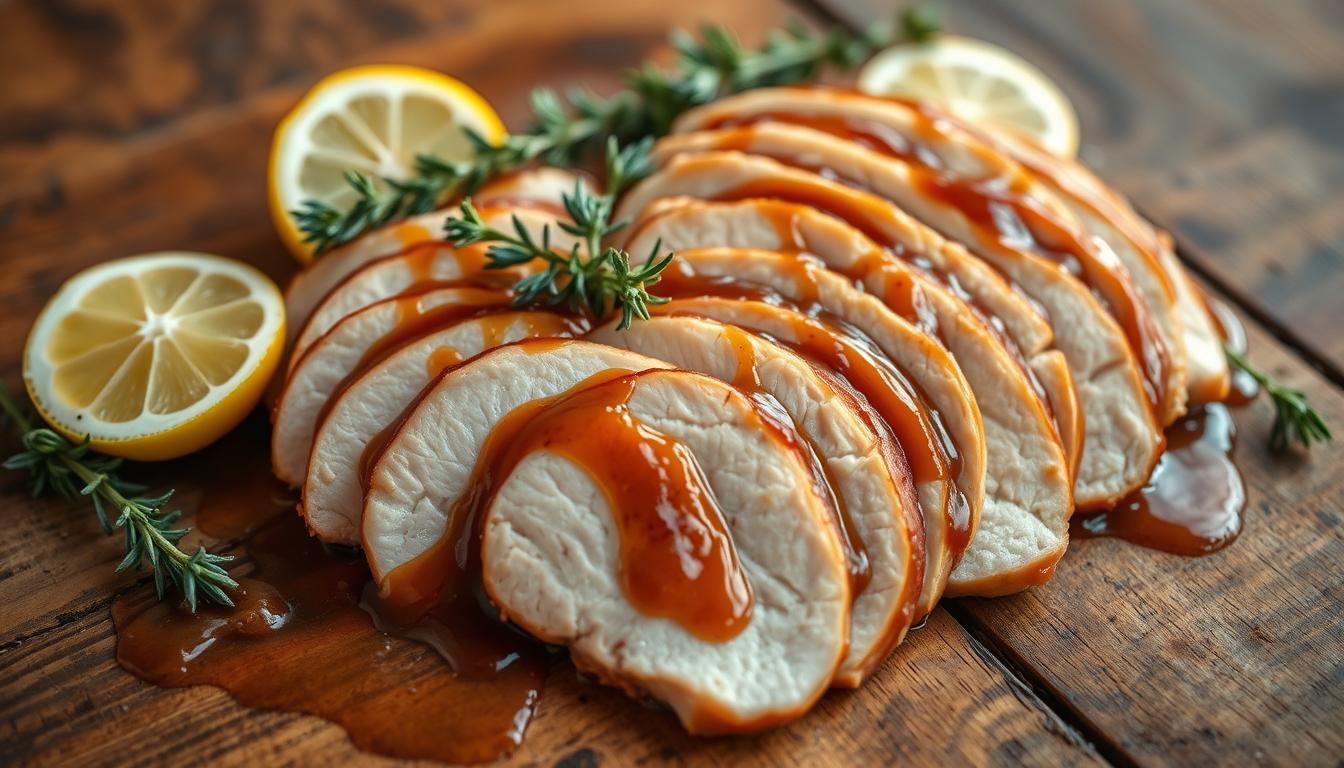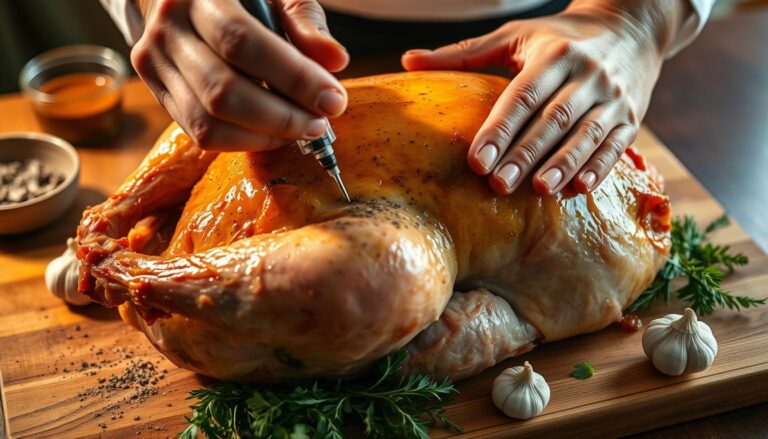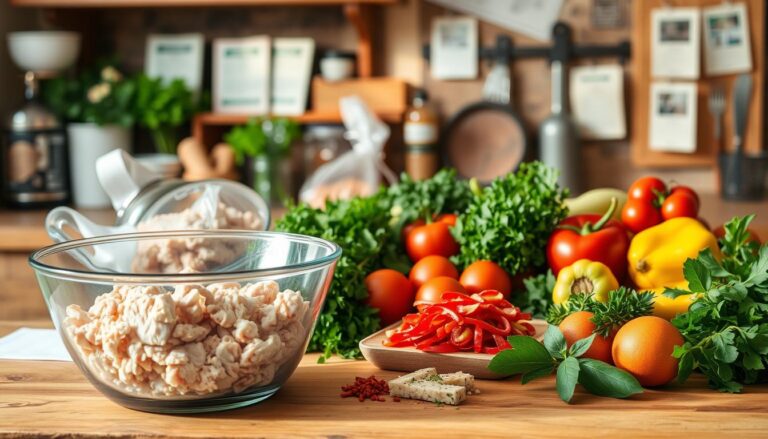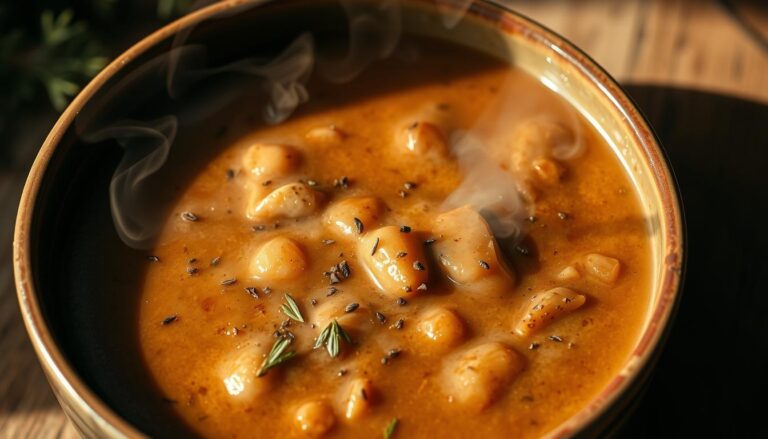Mouthwatering Sliced Turkey Breast Recipes
You know the disappointment of thin, dry deli meat that never tastes like home. You wanted juicy, flavorful lunch that didn’t cost a fortune or hide preservatives. This guide shows you how to roast and chill your own deli-style meat with pantry staples and a simple pan method.
You’ll learn a buttery rub with honey, paprika, and fresh herbs that locks in flavor and fat. Pull the roast at 160°F so carryover brings it to a safe 165°F. Chill fully, then slice thin against the grain for clean, deli-style cuts.
Recipes here cover the master roast and quick skillet options so your meal and dinner plans stay flexible. I’ll also share storage, freezing, and gentle reheating tips — add a splash of broth or stock to preserve moisture.
Follow this short guide and you’ll have sandwich-ready meat, plus ideas for side pairings and half-portion adjustments. By the time you finish, you’ll feel confident about time, temperature, and getting repeatable, deli-quality results at home.
Table of Contents
Why you’ll love these sliced turkey breast recipes
A simple butter-and-spice approach transforms ordinary roast into dependable, flavorful slices you’ll use all week.
The buttery rub locks in juiciness and adds sweet, smoky, savory, and herby notes. There are no preservatives—just turkey breast, spices, and stock. That clean list means you control salt, herbs, and any chicken-based liquids.
Customization is easy. Go classic with rosemary, garlic, and lemon. Or try sweet-smoky blends with honey, chili powder, and brown sugar. For a bright kick, use hot sauce, butter, and chives.
- You’ll get deli-quality meat with pure taste and clean ingredients for any meal or dinner.
- You’ll save active time—about 15 minutes to prep—and then roast, rest, chill, and slice.
- You’ll love how the method scales for small or large batches and holds up for thin or thick cuts.
- You’ll build repeatable kitchen confidence with a simple spice-and-butter method.
Quick takeaways: time, temperature, and tools for success
A few timing rules and the right gear let you stop guessing and start serving perfect slices. These notes give fast guidance on what to watch and when to use the oven versus the pan.
Target internal temp and thermometer use
Pull the roast at 160 degrees and rely on carryover to reach 165°F for safe, juicy meat. Insert an instant-read thermometer into the center of the thickest part to check doneness.
Estimated minutes per pound
At 350°F, plan roughly these minutes: 2 lb — 60–70; 2.5 lb — 75–85; 3 lb — 90–105; 4 lb — 120–140. Use these ranges to estimate total time and adjust for your oven.
Skillet vs. oven: when to choose each
Let the roast sit at room temperature minutes (about 30–45) before cooking for even results. Choose oven roasting for uniform, deli-style cuts and batch prep.
Pick skillet medium heat for quick weeknight cutlets. Keep liquid in the pan and baste to prevent drying. Manage your minutes, monitor temperature, and rest before slicing to get repeatable results.
Ingredients and equipment you’ll need
Preparation centers on one compound butter, a quality cut, and a steady pan for roasting. Gather the items below before you start so the roast finishes cleanly and slices evenly.
Cut choice and why it matters
Choose a 2–3 lb boneless, skinless breast for easy carving and quick chilling. Bone-in works, too, but plan extra time and rub under and over the skin for even flavor.
Pantry, fats, and liquids
Compound butter: 6–8 tbsp unsalted butter mixed with smoked or Hungarian paprika, garlic powder, onion powder, cumin, a teaspoon of mustard powder, honey, light brown sugar, dried rosemary, and dried thyme.
Keep a cup of chicken broth or plain broth on hand to pour into the pan. Baste every 20 minutes so the meat stays juicy.
Tools that make slicing easy
- Roasting pan with rack and foil for tenting.
- Kitchen twine to form a uniform log.
- Instant-read thermometer to track internal temperature.
| Item | Why it helps | Tip |
|---|---|---|
| Boneless breast | Carves thin, consistent slices | Choose 2–3 lb for best results |
| Compound butter | Locks in fat and flavor | Spread under skin or over surface |
| Broth in pan | Adds moisture and pan drippings | Top up with a cup if it dries |
Master method: oven-roasted turkey for deli-style slices
Start by making a rich compound butter so every slice stays juicy and flavorful. Combine softened butter with smoked paprika, garlic and onion powder, cumin, honey, light brown sugar, mustard powder, dried rosemary, and dried thyme. Mix until smooth and easy to spread.
Season, fold, and tie for even cooking
Rinse and pat the breast dry. Rub the butter mixture all over, fold like a book with the skin side out, and tie every two inches to form a uniform log.
Brine or marinate, then rest
Dry-brine or refrigerate wrapped for 8 hours or overnight. Take the roast out and let it sit 30–45 minutes at room temperature minutes before you start the oven.
Roast with broth, monitor time and degrees
Pour one inch of stock or broth into the pan. Roast at 350°F and baste every 20 minutes. Use an instant-read thermometer and pull the roast at 160°F. Carryover will bring the internal temp to 165 degrees.
Rest, chill, and slice against the grain
Tent skinless roasts with foil and rest 15–20 minutes so juices redistribute. Chill fully for clean, deli-style slicing. Cut thin against the grain for the best bite.
| Step | Key detail | Why it matters |
|---|---|---|
| Compound butter | Butter + spices + honey | Locks flavor and helps browning |
| Tie and shape | Fold, tie every ~2 in. | Ensures uniform slices and even cook |
| Roast setup | 350°F, 1 inch broth, baste 20 min | Prevents drying and adds pan juices |
| Finish | Pull at 160°F, rest, chill | Safe degrees and cleaner cuts |
Sliced turkey breast recipes
Quick stovetop methods turn thin cutlets into a weeknight win with bright sauces and fast sears.
These four fast approaches show how you can get juicy slices in minutes without fuss. Pound cutlets to a uniform half inch so every piece cooks evenly. Use a hot skillet and watch the clock to avoid overcooking.
Weeknight skillet turkey breast cutlets with garlic and herbs
Pan-sear cutlets over skillet medium heat with garlic, chopped herbs, and a quick baste. Cook about 2–3 minutes per side until golden.
Smoky paprika pan sear with a splash of cup chicken broth
Rub cutlets with smoked paprika and salt. Sear in a hot pan, then deglaze with a splash of chicken broth or a cup of stock to keep the meat moist.
Grilled cutlets with mustard-honey glaze
Whisk mustard, honey, and a touch of sugar. Grill or sear cutlets, brushing glaze in the last minute for char and shine.
Turkey piccata-style slices in a quick lemon-caper skillet
Sauté slices briefly, finish with butter, lemon, and capers. Let the sauce cling to the meat and serve in minutes for a bright, buttery finish.
- Keep portions even by pounding to a half inch.
- Swap in chicken or vegetable broth and adjust herbs on the fly.
- Rest cutlets briefly, then slice across the grain for the best bite.
| Method | Key step | Why it helps |
|---|---|---|
| Garlic & herbs | Skillet sear 2–3 minutes per side | Fast cook, bold flavor |
| Paprika pan sear | Deglaze with a splash of broth | Prevents drying and adds pan juices |
| Mustard-honey glaze | Brush in final minute | Quick char and glossy finish |
| Piccata style | Finish with lemon, butter, capers | Bright, saucy coating in minutes |
Seasoning and rub variations to match your taste
Think of seasoning as a toolkit: a few pantry staples let you build distinct profiles for your roast.
Classic deli: combine finely chopped rosemary, thyme, minced garlic, and lemon zest. Rub on the surface with a little oil so the herbs adhere and the flavor penetrates.
Sweet and smoky: mix paprika, chili powder, honey, and light brown sugar. The sugar helps caramelize while paprika adds warm, smoky flavor—try a pellet smoker for extra depth.
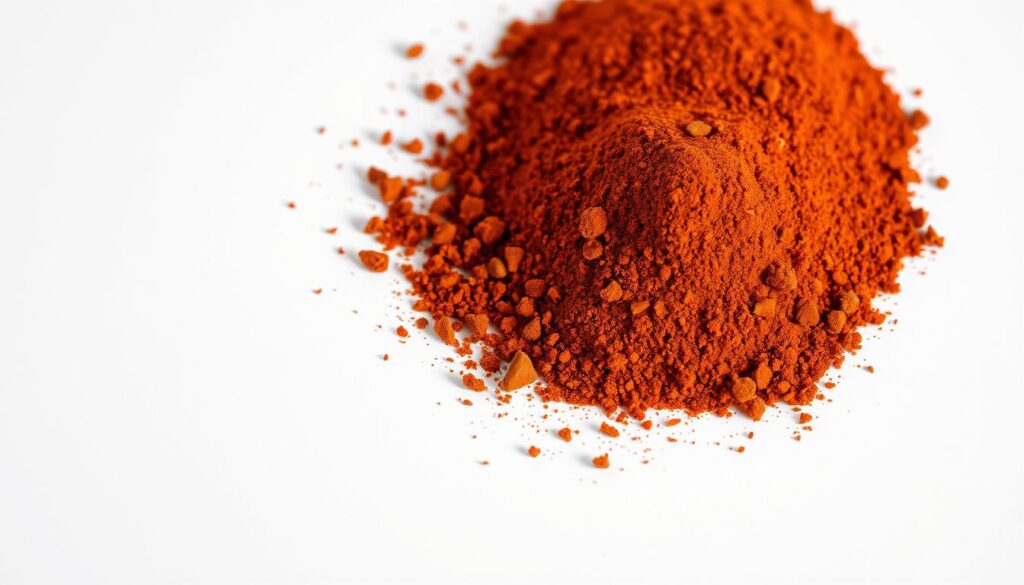
Herb-forward: press a crust of sage, oregano, and other fresh herbs into the meat for bright, savory notes. This approach gives big flavor with minimal steps.
Spicy heat: add cayenne or chipotle to the mix and season with salt and pepper to taste. Start light—you can always ramp up next time.
Buffalo-inspired: whisk unsalted butter with hot sauce and finish with chopped chives for a tangy coating. For a dairy-free option, use plant-based butter and a cup of broth to keep texture supple.
| Profile | Key ingredients | Best use |
|---|---|---|
| Classic deli | rosemary, thyme, garlic, lemon | Sandwiches, subs |
| Sweet & smoky | paprika, honey, brown sugar | Grilled or smoked plates |
| Herb-forward | sage, oregano, fresh herbs | Salads, warm entrees |
You can split a roast and apply two different rubs to compare. Adjust the mixture thickness with oil or butter for easy spreading. Match the variation to your meal plan and note how ratios affect final flavor for your next cook.
Nutrition notes: protein, saturated fat, sodium, and balance
Simple swaps—like unsalted butter or a plant-based spread—let you control saturated fat without losing richness. Homemade lunchmeat gives you lean protein and removes hidden additives so you can tune salt and fat to your needs.
Lean protein per serving and ways to manage saturated fat
You’ll get naturally lean protein from turkey breast when you trim visible fat and roast or sear instead of frying. Choose unsalted butter, reduce the amount, or use plant-based alternatives to cut saturated fat and total fat.
Portion control also helps manage cholesterol. Keep servings moderate and pair slices with vegetables to feel satisfied with less meat.
How seasoning, salt, and broth affect sodium
You’ll control sodium by salting lightly, tasting pan drippings, and using low-sodium or unsalted broth. Swap in plain stock or water when you baste to lower the salt load across a week of lunches.
Smart sides for fiber and overall meal balance
Boost fiber with whole-grain breads, legumes, salads, and roasted vegetables. Fiber-rich sides slow digestion and help balance any meal that centers on lean protein.
Hydrate sauces with low-sodium stock rather than heavy cream to keep fat lighter and calories in check.
| Focus | Tip | Why it helps |
|---|---|---|
| Protein | Trim fat, roast or quick-sear | Lean, filling portions |
| Saturated fat | Use unsalted butter or plant spread | Lower saturated fat without losing flavor |
| Sodium & cholesterol | Salt sparingly; pick low-sodium broth | Controls sodium and supports heart health |
- You’ll boost fiber with whole grains and veggies.
- You’ll skip additives and keep the nutrition panel cleaner for your recipes and meal planning.
- You’ll use proper temperature and resting to keep meat juicy so you don’t add extra fat when reheating.
Serving ideas: from sandwiches to skillets
A single pan of roasted meat can become lunches, dinners, and party spreads with a few smart swaps. Use the cooked protein as a flexible base and mix flavors to suit the meal.
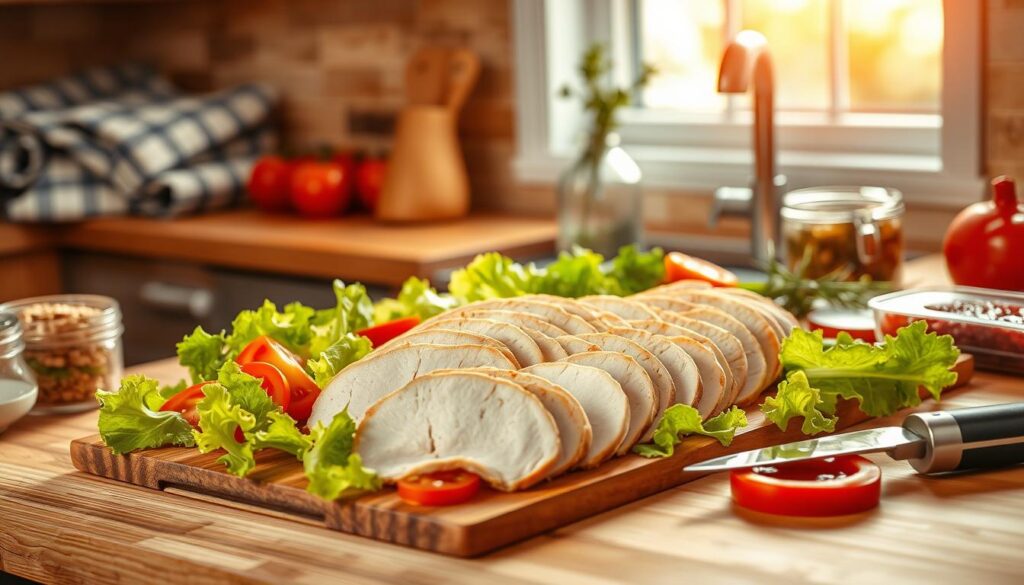
Classic sandwich and club builds
Stack slices with crisp lettuce, tomato, and your favorite cheese for a reliable club. Cut sandwiches in half for easy sharing or pack a half with soup.
Warm skillet melts and paninis
Brush bread with butter or mustard-honey, layer meat and cheese, then press in a hot skillet or pan for a gooey melt. Piccata or mustard-honey profiles add bright flavor to warm sandwiches.
Wraps, pitas, and crunchy sides
Roll meat into wraps or pita pockets with crunchy veggies and a light sauce for portable lunches. Pair each wrap with a fresh side like slaw or fruit for balance.
Salads, soups, and egg dishes
Top greens with warm or cold slices to add protein. Dice meat into soups, omelets, or fried rice for quick comfort and fuller bowls.
Leftovers, holiday boards, and shortcuts
Shred remaining slices for a quick tetrazzini or pile them on a holiday board with condiments and sides so guests build their own plates.
- You’ll stack a classic club with lettuce, tomato, and cheese for dependable flavor.
- You’ll press warm skillet melts and paninis so cheese and juices mingle in the pan.
- You’ll roll wraps and pita pockets with crunchy veggies and a fresh side on the go.
- You’ll top salads with slices to add protein and make a full meal.
- You’ll stir diced meat into soups and egg dishes for quick comfort.
- You’ll load stuffed baked potatoes with meat, veggies, and light gravy for a cozy plate.
- You’ll assemble holiday boards with sauces and sides for easy sharing.
- You’ll shred slices for a tetrazzini shortcut when you want creamy comfort fast.
- You’ll lean on quick turkey breast cutlets for weeknight plating.
- You’ll portion half-sandwiches with soup or a crisp side for smart variety.
| Use | Best match | Why it works |
|---|---|---|
| Sandwich/Club | Classic slices, cheese | Reliable flavor, easy prep |
| Skillet Melt | Piccata or honey-mustard | Quick, warm, gooey finish |
| Salad | Cold or warm slices | Adds protein and texture |
| Leftover Shortcut | Shredded for tetrazzini | Comfort food in less time |
Storage, freezing, and reheating without losing moisture
Store and reheat your roast the right way so it stays moist and ready all week.
Refrigerator storage: keep whole vs. pre-sliced
Cool to room temperature, tent skinless roasts with foil, then chill fully. Keep the turkey whole if you plan to slice later; that preserves moisture and slows oxidation.
If you prefer grab-and-go portions, pre-slice and layer with parchment to stop pieces from sticking.
Freeze in portions with parchment for easy pull-apart
Freeze up to 3 months in labeled bags. Wrap slices between sheets of parchment so you can pull portions in minutes. Thaw overnight in the fridge for best texture and safe temperature control.
Skillet reheat with a splash of broth to preserve juiciness
Reheat gently in a hot skillet with a splash of broth or a little water to create steam. Use about a cup chicken broth or plain stock if you like richer pan juices.
Avoid the microwave; it concentrates salt and can toughen meat. Skillet reheating for a few minutes restores moisture without adding fat.
How long cooked turkey keeps safely
Store cooked turkey in the refrigerator up to 1 week. Track time and use leftovers within that window for safety and best flavor.
“Cool, tent, chill, and reheat slowly — those steps make weeknight meals taste fresh.”
| Storage Step | Tip | Why it helps |
|---|---|---|
| Chill & tent with foil | Cool to room temp, then foil tent | Protects surface texture and keeps juices |
| Freeze in portions | Layer with parchment, label date | Easy pull-apart portions, less waste |
| Skillet reheat | Splash of broth, low heat, few minutes | Restores steam and prevents drying |
- You’ll store pan juices separately to build quick sauces.
- You’ll skim extra fat before reheating to keep flavors clean.
- You’ll monitor time and temperature so meals stay safe and tasty.
Conclusion
When you pull at 160°F and let carryover bring the roast to 165°F, you lock in juiciness and repeatable results. ,
Keep a thermometer handy and baste every 20 minutes. Tie the roast into a log, chill fully, then slice thin for clean deli-style portions.
You’ll leave with a reliable recipe and a clear plan: season to taste, use a teaspoon-led spice mix, and adjust sugar and salt modestly. Rotate classic deli herbs, sweet-smoky, or buffalo top mixes so the meat never feels repetitive.
Practical tips: store cooked meat up to 1 week or freeze 3 months. Reheat gently in a skillet with a cup of stock to restore moisture and taste.

